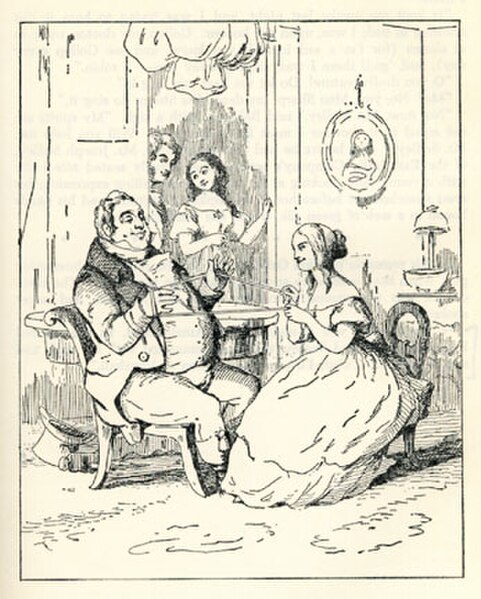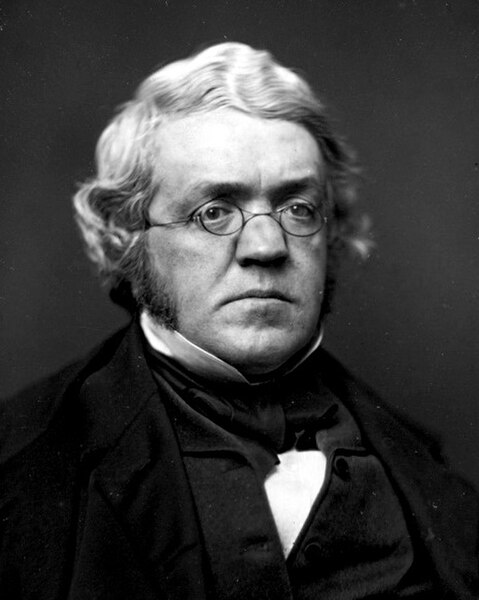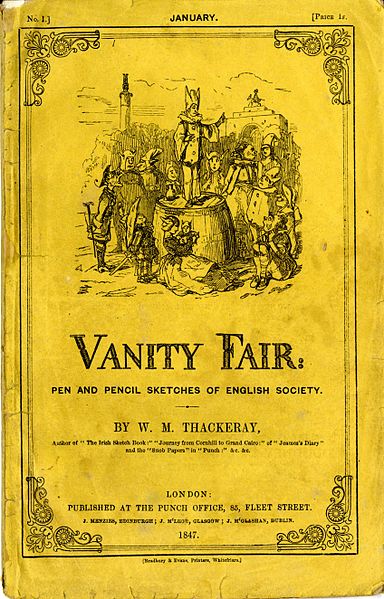Rebecca "Becky" Sharp, later describing herself as Rebecca, Lady Crawley, is the main protagonist of William Makepeace Thackeray's 1847–48 novel Vanity Fair. She is presented as a cynical social climber who uses her charms to fascinate and seduce upper-class men. This is in contrast with the clinging, dependent Amelia Sedley, her friend from school. Becky then uses Amelia as a stepping stone to gain social position. Sharp functions as a picara—a picaresque heroine—by being a social outsider who is able to expose the manners of the gentry to ridicule.
Illustration by Thackeray to Chapter 4 of Vanity Fair: Becky Sharp is flirting with Mr Joseph Sedley.
Portrait photograph of Minnie Maddern Fiske as Becky Sharp, c.1910.
Daguerreotype photograph of William Makepeace Thackeray, author of Vanity Fair by Jesse Harrison Whitehurst.
Miriam Hopkins portraying the character in the film Becky Sharp.
Vanity Fair is a novel by the English author William Makepeace Thackeray, which follows the lives of Becky Sharp and Amelia Sedley amid their friends and families during and after the Napoleonic Wars. It was first published as a 19-volume monthly serial from 1847 to 1848, carrying the subtitle Pen and Pencil Sketches of English Society, which reflects both its satirisation of early 19th-century British society and the many illustrations drawn by Thackeray to accompany the text. It was published as a single volume in 1848 with the subtitle A Novel without a Hero, reflecting Thackeray's interest in deconstructing his era's conventions regarding literary heroism. It is sometimes considered the "principal founder" of the Victorian domestic novel.
Title page to the first issue of the Vanity Fair 1847–1848 serial, whose canary-yellow colour became a Thackeray hallmark. Thackeray was also responsible for its illustrations.
A reprint of John Bunyan's Plan of the Road from the City of Destruction to the Celestial City, including Vanity Fair as the major city along the path
Mr. Joseph Entangled by Becky
George Osborne







